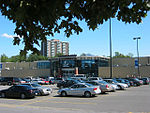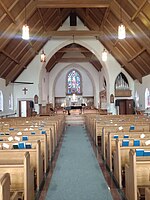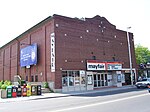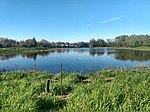Billings Bridge
1830 establishments in Upper Canada1916 establishments in OntarioBridges completed in 1830Bridges completed in 1916Bridges in Ottawa ... and 3 more
Neighbourhoods in OttawaRoad bridges in OntarioUse Canadian English from January 2023

Billings Bridge is a bridge over the Rideau River in Ottawa. Bank Street passes over the river by way of this bridge. The bridge was named after Braddish Billings, who settled in this area and established a farm nearby in 1812. The first bridge, originally called Farmers Bridge, was built over the river here in 1830. The current bridge was built in 1916. Billings Bridge also referred to a village, located south of the river near the bridge, which became part of the city of Ottawa in 1950. The area, now an Ottawa neighbourhood, is still referred to as Billings Bridge.
Excerpt from the Wikipedia article Billings Bridge (License: CC BY-SA 3.0, Authors, Images).Billings Bridge
Bank Street, Ottawa Old Ottawa South (Capital)
Geographical coordinates (GPS) Address External links Nearby Places Show on map
Geographical coordinates (GPS)
| Latitude | Longitude |
|---|---|
| N 45.3892 ° | E -75.6778 ° |
Address
Billings Bridge
Bank Street
K1S 3Y2 Ottawa, Old Ottawa South (Capital)
Ontario, Canada
Open on Google Maps










